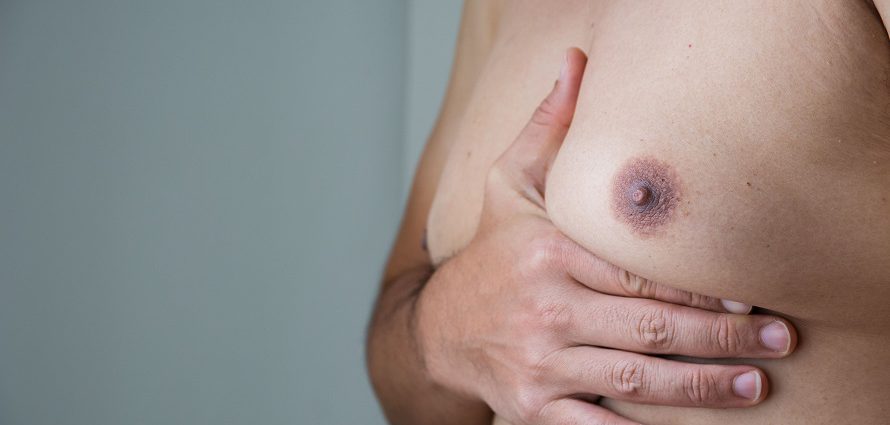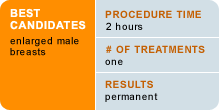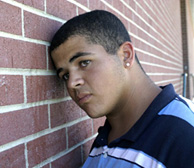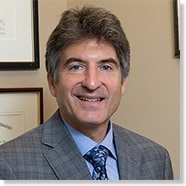Male Breast Reduction – Gynecomastia Treatment – Results & Cost
Medically Reviewed by: Dr. Arnold Breitbart


Shame. Humiliation. Insecurity. These are some of the emotions experienced by men with enlarged breasts, or gynecomastia.
About half of all men today have excess localized fat and/or excess glandular tissue in one or both breasts. Gynecomastia accounts for more than 65 percent of all male breast disorders, according to the American Society of Plastic Surgeons (ASPS). Surgery with or without liposuction may be used to treat enlarged male breasts.
While often not a serious medical problem, enlarged breasts in men can be painful. It can also cause embarrassment — especially among young boys who may be teased as a result of their breasts. The condition is especially common in teen boys. Up to 65 percent of 14-year-old boys have enlarged breasts, according to the American Academy of Family Physicians. This is largely due to the fluctuations in sex hormones that occur during puberty. The excess breast tissue disappears without treatment in two years in 75 percent of these boys, and within three years in 90 percent of them.
Enlargement typically occurs on both sides of the chest, but if it is one-sided, firm and hard, see a doctor immediately to rule out male breast cancer.
Causes of Enlarged Breasts in Men

In most cases, the cause of enlarged breasts is unknown. Among older men, gynecomastia often results from decreasing levels of the male sex hormone testosterone, which diminishes with advancing age. In addition, men experience an increase in body fat with age and a resultant rise in the ratio of the female sex hormones (estrogens) to the male sex hormones (androgens).
Medications may also cause enlarged breasts, including:
- Anti-androgens used to treat prostate enlargement or cancer and some other conditions
- AIDS medications
- Anti-anxiety medications
- Tricyclic antidepressants
- Antibiotics
- Ulcer medications
- Cancer treatments
- Heart medications
- Anabolic steroids and androgens
- Alcohol
- Amphetamines
- Marijuana
- Heroin
If you persistently use drugs that may cause the condition, you may not be an ideal candidate for male breast reduction treatment. Your doctor will likely first advise you to stop using these drugs or to switch to other medications that do not cause gynecomastia. However, never stop taking a prescription medication without talking to your doctor first.
Diseases may cause enlarged breasts as well. These may include:
- Any conditions that interfere with normal testosterone production
- Some tumors, such as those involving the testes, adrenal glands or pituitary gland
- Hyperthyroidism (the thyroid gland produces too much thyroid hormone)
- Kidney failure
- Liver failure and cirrhosis
- Malnutrition
In some cases the appearance of fat on the chests of men and boys is not gynecomastia, but pseudogynecomastia, a condition that may resolve with diet or exercise. By contrast, true gynecomastia will not improve with diet and exercise.
Gynecomastia Treatment Candidacy
You may be a candidate for gynecomastia treatment if you are healthy, are of relatively normal weight and are bothered by the feeling that your breasts are too large. In addition, your breast development must have stabilized, and you must have realistic expectations about what the procedure can and cannot accomplish. Male breast reduction may be discouraged if you are extremely overweight or obese and have not first attempted to lose weight.
In general, the best candidates for surgery have firm, elastic skin that will reshape to the body’s new contours.
Teens may benefit from surgery if their gynecomastia has been present for more than two years or if the problem is severe.
Your Breast Reduction Consultation
A consultation with a board-certified plastic surgeon is needed to determine if you are a good candidate for male breast reduction.
In addition to taking a thorough medical history, your surgeon will also perform a physical exam to measure the extent of excess fat and glandular tissue in the chest area. Your surgeon may also conduct diagnostic testing if indicated, which may include referral for an endocrinology work-up.
Your surgeon may also take some “before” photos during this consultation process and should discuss your expectations with you.
Preparing for Surgery
Once you have scheduled your procedure, your surgeon will give you a list of preoperative instructions. This will include some lab testing such as routine blood work and a cardiac workup if you have any history of heart disease. Your surgeon will also discuss male breast reduction risks with you prior to surgery. He or she will likely ask you to stop taking certain medications, including aspirin, nonsteroidal anti-inflammatory drugs (NSAIDs) and blood thinners, all of which can increase bleeding risk.
Certain herbal remedies may also increase bleeding risk. For example, vitamin E, omega-3 fatty acids, green tea and gingko biloba all may increase bleeding risk during and after surgery. Make sure you tell your surgeon about everything that you are taking, even if it seems harmless. Most surgeons recommend that prospective patients quit smoking for the month before and the month after surgery. Your prospective surgeon should also discuss male breast reduction recovery with you to make sure you know what to expect.
The Gynecomastia Surgery Procedure
Breast reduction surgery for gynecomastia is most often performed on an outpatient basis in an office-based or ambulatory surgical facility. Time in surgery is typically an hour and a half, to two hours, but a more extensive male breast reduction may take longer.
The procedure is often performed under general anesthesia, but for more minor cases, local anesthesia with sedation may be adequate. Your surgeon will discuss your anesthesia options with you once you have decided on surgery. If your enlarged breasts consist primarily of excessive fatty tissue, your surgeon may use liposuction alone. If excess glandular tissue is the primary cause, the tissue is excised. Most cases of gynecomastia benefit from a combination of liposuction and direct excision of glandular tissue.
The incision is typically made at the lower edge of the areola (pigmented area around the nipple). The surgery usually starts with liposuction to remove the fatty part, and then the firmer glandular tissue is directly excised through the small incision. Major reductions that involve the removal of a significant amount of tissue and skin may require larger incisions and more visible scars.
When liposuction is used to remove the excess fat, a slim, hollow tube (cannula) is inserted directly through the incision. The cannula is attached to a vacuum pump to suction out the fat.
For liposuction-only breast reduction, your surgeon will likely make a small incision at the edge of the areola or sometimes in the underarm area. Once closed, the incisions are covered with a dressing. A compression vest garment is worn post-op to expedite resolution of swelling.
Cost of Gynecomastia Surgery
The cost of male breast reduction varies based on the extent of your surgery. It typically includes the surgeon’s fee, surgical facility costs, anesthesia fees and prescriptions for medication and post-surgery garments. Get a complete cost before booking your surgery. Many plastic surgeons do offer financing plans.
In most cases, the cost of male breast reduction surgery is not covered by insurance. Each insurance policy varies greatly, so your policy and surgeon’s participation would need to be reviewed to determine possibility of coverage.
Choosing the Right Surgeon
Choose a board-certified plastic surgeon with extensive experience in male breast reduction procedures to minimize your risk of gynecomastia surgery complications and maximize your satisfaction with the results. Start your search for the right surgeon now.
About the Reviewer
 Arnold S. Breitbart, MD, FACS, is a highly skilled plastic surgeon who is board certified by the American Board of Surgery and the American Board of Plastic Surgery. Dr. Breitbart has advanced fellowship training in craniofacial surgery, microsurgery and breast reconstruction, and has been selected multiple times by Castle Connolly as one of the “Top Doctors in America.”
Arnold S. Breitbart, MD, FACS, is a highly skilled plastic surgeon who is board certified by the American Board of Surgery and the American Board of Plastic Surgery. Dr. Breitbart has advanced fellowship training in craniofacial surgery, microsurgery and breast reconstruction, and has been selected multiple times by Castle Connolly as one of the “Top Doctors in America.”



